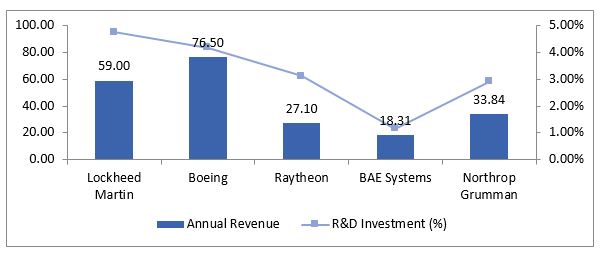We discuss the following topics in this blog:
- Unification of digital and physical attributes
- Simulation-Based Predictive Maintenance
- Exploring New Business and Application Possibilities
In addition to these topics, we shall also be answering the following FAQs:
- What is WiFi?
- What is Open RAN?
Contents
Overview
The world which we know has been constantly been evolving and transformed by a convergence of physical and digital technologies, impacting existing products, services, and environments. Enterprises are harnessing the faster computational power, advanced manufacturing technique (IIOT) and augmented reality to re-establish them to gain competitive dominance.
Even defence enterprises are not far behind, although in the adoption of techs they’ve far ahead than the other industries. Such is the case of ‘Digital Twin’ – which is a dynamic digital representation of a physical product. However, unlike a virtual prototype, a digital twin is a digital illustration of a physical product that is constantly advancing through the product performance in various test-beds, engineering processes, and maintenance data during the product’s development.
What Does the Emerging Technology Have to Offer?
With the unification of digital and physical attributes it allows analysis of data and monitoring of product development in a constraint virtual environments. With the integration of digital twin, enterprise can combine product simulation, facilitating product enhancement and virtual prototyping. One can comprehend the kind of R&D investment necessitates in Defence for the development of new products as they tend to operate in extreme and harsh conditions. The products majorly employed in critical situation where product failures could have a profound impact on lives as well as nation security.
Top Defence Companies – R&D investment (%) & Annual Revenue ($B), 2019

R&D investment is always being a significant portions of the companies the annual revenue, wherein they are exploring the possibilities of new products in the market. They are highly susceptible to failure, which in turn cost them in the billions as well as years of efforts. The mean failure rate in the industry typically ranges between ~40-60%, which impacted viability of product commercial success. To mitigate the failure rate defence companies are investing heavily in tech such as ‘Digital Twin’ that allows them to facilitate analysis, circumvent issues, and take well informed decisions which enhance the product success possibilities.
With the assimilation of digital and physical characteristics, the digital twin enables real time monitoring of product development, processes and timely data analysis to forestall concern well in advance. Also, allow to take preventive measures to avoid downtime, explore new revenue streams, increase QoS, and augmenting new features during the product development cycle.
Enhance Quality Control & Management
The real-time monitoring of the product evolution cycle offers great benefit to enhance and manage quality over the random inspection. With the integration of digital twin in the product development cycle have enables constant monitoring and assessment at each function of the product life cycle which necessitates detecting the quality concern. Later, the concerns can be taken into account before it may have a serious repercussion. It also allows analysing the product composition material to be ascertained of the availability of better or superior materials and production processes that could be implemented.
Simulation-Based Predictive Maintenance
With the real-time access to data on operational, maintenance and health data of physical twin allows running diagnostic operations in terms of identifying root issues and assessing product characteristics that allow strengthening contingency planning as well as predicting its performance. The digital twin can embed into the control loop to ascertain changes which later can be amended based on the resulting parameters to deal with the mounting exigencies.
What are Some New Business and Application Possibilities?
With a digital twin, various virtual versions (3D modelling) of product attributes are captured, which can be used for further exploration of new and customised product development approach. The advancement in data science and machine learning technologies have help to expedite the analysis of the enormous amount of data generated in various iterations, which eventually be used to develop insights for the potential business uses cases and new business streams. So far, digital twin initiatives intend to focus on complex, high-cost systems. However, in the future with the advancement of IOT, communication networks and virtual simulation modeling, developing a comprehensive digital twin solution across all the industries doesn’t seem far-fetched.
Conclusion
The digital depictions of a perceptible product have transformed the entire defence product lifecycle from the concept through R&D design, engineering and supply-chain to product commercial launch as well aftermarket reach. A digital twin has the ability to leverage on digital design enabling a simulated approach across various circumstances to gain more and valuable insights as well as assess product performance in real world. The use of innovative technology helps defence enterprises to streamline data flows and improve their manufacturing productivity and reliability.
FAQs
What is WiFi?
Put simply, WiFi is a technology that uses radio waves to create a wireless network through which devices like mobile phones, computers, printers, etc., connect to the internet. A wireless router is needed to establish a WiFi hotspot that people in its vicinity may use to access internet services. You’re sure to have encountered such a WiFi hotspot in houses, offices, restaurants, etc.
To get a little more technical, WiFi works by enabling a Wireless Local Area Network or WLAN that allows devices connected to it to exchange signals with the internet via a router. The frequencies of these signals are either 2.4 GHz or 5 GHz bandwidths. These frequencies are much higher than those transmitted to or by radios, mobile phones, and televisions since WiFi signals need to carry significantly higher amounts of data. The networking standards are variants of 802.11, of which there are several (802.11a, 802.11b, 801.11g, etc.).
What is Open RAN?
From a deployment standpoint, we have Non-Standalone Mode(NSA), Dynamic Spectrum Sharing(DSS), and Standalone Mode (SA). The initial deployments of 5G NR are based on NSA standards, meaning the existing 4G LTE network will operate on the control plane, and 5G NR will be introduced to the user plane.
This particular standard was introduced by 3GPP, keeping in mind the industry’s push to faster 5G services rollout while utilizing the existing 4G LTE infrastructure currently in place. On the other hand, operators are also implementing Dynamic Spectrum Sharing (DSS) to accelerate the deployment cycle, which will reduce costs and improve spectrum utilization. In this standard, the same spectrum is shared between the 5G NR and 4G LTE, multiplexing over time per user demands. Lastly, we have the Standalone Mode (SA), which moves towards a complete 5G based network where both signaling and the information transfer are driven by a 5G cell.















